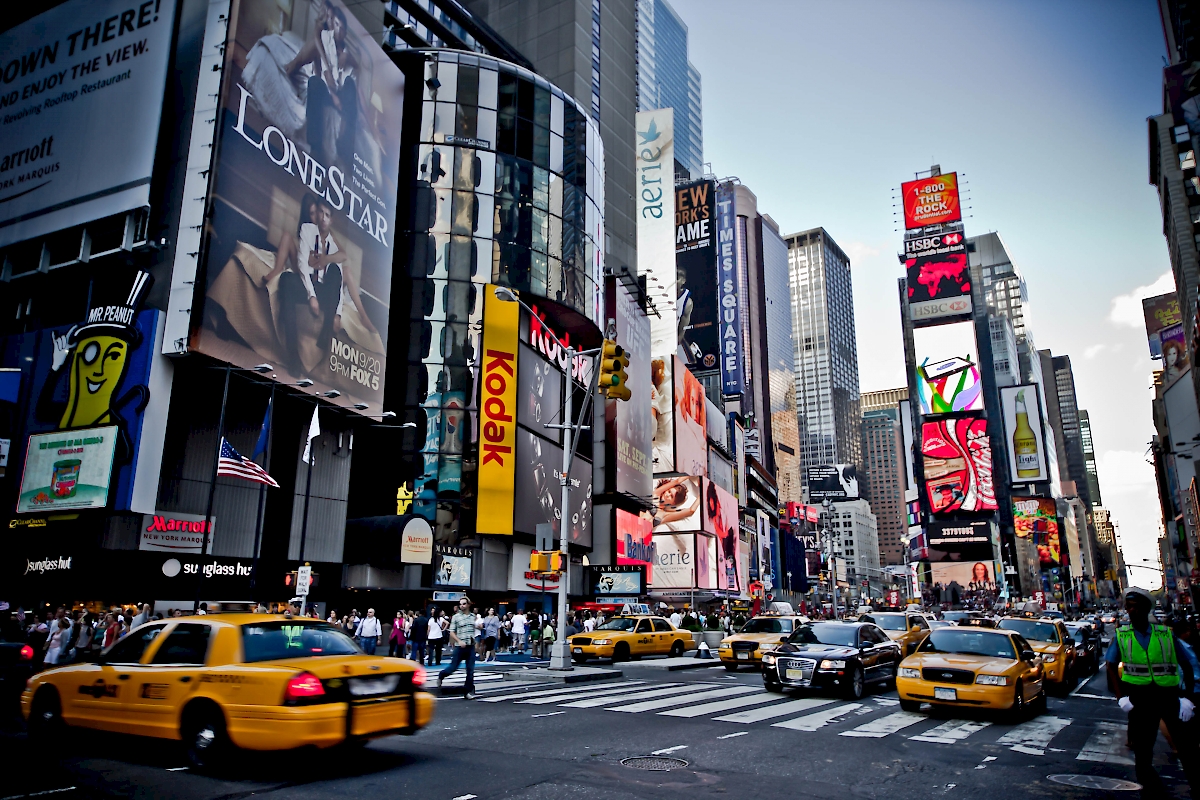Big cities are often seen as the cause of serious social problems: crime, infectious diseases, homelessness and pollution are but some of the ills associated with large urban agglomerations. Labor problems such as unemployment, informality and unsafe labor conditions are, in many people’s minds, features of the big city, especially in the developing world. However, throughout history, migrating to the city in search of better opportunities has been the safest route to escape poverty. This apparent contradiction has motivated many thinkers and scholars to understand the attraction of the city and its ability to provide for its inhabitants and, more often than never, grow and thrive, rather than succumb to its own problems.
Cities exist because of the tendency of firms to cluster together. Many arguments have been advanced to explain why it is convenient for firms to locate near other firms. The traditional view has been that access to valuable resources (water, energy sources, etc.) and transportation routes encourage firms to cluster. This in turn attracts people, creating an additional and no less important reason to cluster: access to a pool of workers. To the extent that workers are well educated, this further stimulates productivity and makes cities less constrained by traditional determinants.1
In these approaches, the dynamism of a city comes from making good use of the resources available to firms and individuals through more efficient production, distribution and consumption processes. The expansion and prosperity of a city can be halted or reversed by forces that operate in the opposite direction, such as overuse of natural resources, environmental degradation or congestion. Local government interventions, such as urban planning and housing controls, can prevent or postpone these events. Education and training services, as well as providing the urban amenities most valued by firms and workers, may help cities remain competitive. On the other hand, excessive or misguided regulation and planning may raise housing and transportation costs, prompting firms and workers to migrate to other cities.2
Although useful to explain the rise and decay of some cities, these views of why firms cluster fail to explain why cities have remained relevant, and why many large cities keep growing, in spite of their exorbitant costs. Since the invention of the automobile, many have predicted the demise of the city as cars and trucks free workers and firms to locate in more convenient and less expensive places than the traditional city. As Robert Lucas, recipient of the Nobel Prize in Economics, noted: “If we postulate only the usual list of economic forces, cities should fly apart. The theory of production contains nothing to hold a city together… What can people be paying Manhattan or downtown Chicago rents for, if not for being near other people?”3
Uncovering diversity
Since Lucas’ assertion in the late eighties, scholars have recognized that firms and workers concentrate in cities because of the “externalities” of human capital: larger pools of educated people can have more interactions that accelerate the diffusion of ideas within and across industries, which leads to faster innovation and productivity increases.
Gradually, and more recently, this view has led to rediscover the importance of diversity in urban life, which is associated with Jane Jacobs, who stressed it in the late fifties and sixties to oppose the urban planning ideas then in vogue.4 While urban planners recommended displacing large neighborhood populations to facilitate massive-scale rebuilding and clear demarcation of zones by activity, Jacobs “extolled density, complexity and diversity and pointed out the advantages of narrow streets, short blocks, mixtures of old and new buildings, and mixtures of commercial, cultural, and residential uses”.5 In Jacobs’ view, the economic and social success of a city depended on its ability to facilitate human interactions and a diversity of economic activities.
Urban economists have taken long to fully come to grips with Jacobs’ seminal ideas. Edward Glaeser, one of the most influential academics in this area, is a case in point. Although he was one of the first to test Jacobs’ hypotheses empirically (finding support to the thesis that urban variety, not specialization, leads to faster employment growth)6, in his best-selling book, Triumph of the City, published in 2011, he almost entirely neglected the role of diversity of individuals, occupations or industries in the fate of cities.7 Richard Florida, another acclaimed writer and urban guru, has highlighted the importance of diversity, but in a rather limited way: he sees ethnic, cultural and sexual diversity as indicators of tolerance and receptivity to new ideas. The so-called “creative class”, which he considers the engine of innovation and productivity in cities, gravitates towards places that are receptive to diverse individuals.8
It is only in the last few years that diversity in a more meaningful way has started to receive attention as one of the main reasons why cities make us more productive and happier. A theoretical basis for that, as aptly put in a widely cited paper, is this: “Diversity and variety in consumer goods or in producer inputs can yield external scale economies, even though all individual competitors and firms earn normal profits… A larger city will have a greater variety of consumer products and producer inputs. Since the greater variety adds to utility and to output…, larger cities are more productive, and the well-being of those living in cities increases with their size”.9

A simple way to understand why diversity leads to “external scale economies” is the scrabble game. You get the most points by making longer words and connecting them with words already on the board. To that aim, what matters is the variety of the letters you have in your hand. If each individual is a letter that represents her capabilities, what makes a city productive is the combination of individuals with different capabilities. Larger cities are more productive not because they have larger numbers of similar individuals, but because there tends to be more variety in larger social settings.
Diversity is good for you
Following this line of reasoning, Bettencourt, Samaniego and Youn (2014)10 recently analyzed the diversity of US metropolitan areas in terms of profession diversity and proposed a theoretical framework that explains the higher productivity of larger cities via the appearance of new occupations as the result of specialization and coordination of labor. In other words, as workers become more specialized and diverse, their interactions become more productive. The larger the city the stronger these forces become.
With my coauthors Neave O’Clery and Andrés Gómez-Liévano,11 we have taken a similar approach to understand how the diversity of industries, in interaction with the diversity of occupations, allows bigger cities to make better use of their labor resources and, therefore, be more productive.
Although cities can be thought as big cauldrons where capabilities are combined, the actual place where this takes place is the firm. Firms are productive to the extent that they are able to coordinate several skills in order to produce the same old goods more efficiently, or more sophisticated new goods that consumers value more than the old goods.
Since the number and size of firms is not fixed, as firms become more diversified and productive they can absorb more workers. As a result, something short of miraculous takes place: larger cities generate proportionally more employment (at firms) than smaller cities. To understand this, it is convenient to see it from the opposite angle: larger cities have lower self-employment rates than smaller cities.
In larger cities, occupation differentiation makes possible to produce in firms that combine a diversity of skills what in smaller cities is produced by family-run or individual businesses. Restaurants, shops and repair garages are examples that easily come to mind, but the pattern also applies to professional services (lawyers, dentists, accountants) and to manufacturing goods of all types. Additionally, firms in larger cities are able to absorb a larger share of the working age population because more people (especially women) feel the need to work in order to take advantage of what the city has to offer, from more education for their children, to a more active cultural and social life.
Where are the jobs?
Therefore, contrary to most people’s intuition, larger cities are the solution, not the cause, of the lack-of-employment problem. If you see too many people coming to the big city to look for jobs, that is precisely the point: where else could they look for them? The patterns just described are more pronounced in the developing world, but hold true also in the US (the only developed country we have studied at detail so far).
Where are the new jobs actually generated as cities become larger? As cities grow in size, the number of people employed by each industry can grow because firms become larger or because the number of firms in each industry increases. In addition to these two sources, employment can grow because industries that produce new goods are created. Can you guess what shares of employment come from each of the three sources as cities grow?
If traditional scale economies at the firm level were the main reason for the existence of cities, most of the additional employment should come from firms becoming larger. If agglomeration economies of the traditional type were the main glue keeping cities together, most employment growth should come from the number of firms. If diversity is the essence of the city, industries that do not exist in smaller cities should be present in larger cities. As it happens, the two latter sources are the ones that really matter (see figure).

In a developing country such as Brazil, a more diversified industrial base contributes about half of the additional jobs that cities create as they become larger. The other half comes from the sheer multiplication of the number of firms in each industry. In the US, where the process of industry diversification has already spread more from the larger to the smaller cities, most of the growth in employment comes from the number of firms in each industry (or, more precisely, from the number of establishments, the actual sites where people work: the larger the city the larger the number of Starbucks, CVS stores, etc.).
Cities play a central role in the development process, and industry diversification plays a central role in the growth of cities, especially but not only in the developing world. The appearance of new industries is what, ultimately, makes us richer and happier.
Paths leading to innovation
How do new industries appear? New sectors do not pop up randomly as cities grow. If they did, cities would tend to become similar to each other. But the opposite happens: New York is a financial center and San Francisco is a high-tech hub. Houston is strong in the petrochemical industry while Los Angeles thrives in the entertainment sector. This is due to the fact that both occupation and industry differentiation are strongly path-dependent processes because new capabilities of individuals and firms do not develop out of thin air.
Throughout history innovation has taken place in cities, but not just any type of innovation takes place in any city. This holds true not only for technological innovations (or how we do things), but also for more complex types of innovation that leads us to do new things and to organize our lives differently. It is particularly true for the great human achievements in the arts and sciences. As carefully documented by Charles Murray,12 creativity in any specific field of the arts and sciences at any point in time in human history has been very concentrated in a few large cities, not just any large city. City differentiation due to different innovation paths has been a fixture of human civilization.
In the traditional views of urban economics, this was seen as evidence of specialization driven by the relative endowments of cities: places with more human capital, or with more talented individuals would spontaneously develop human-capital intensive sectors or talent-intensive activities. But such views miss the point entirely: where does some specific type of human capital or talent come from? And, given that the capabilities of firms are the result of combining in specific ways the different skills and talents of many people, how are these firms’ capabilities created and how do new capabilities emerge?
Obviously, individuals with the right education and training are the ingredients needed by firms to operate, but the ingredients are not the recipe. What makes a firm succeed or fail is not so much the quality of the ingredients but the recipe, not the individuals’ capabilities but the capabilities of the team as a whole. And this is precisely what explains the origin of new industries: new team capabilities that appear as mutations of the existing capabilities.
As in biological evolution, mutations are random variations that occur in a small number of individuals; most of those mutations are useless and get discarded by the species as the individuals carrying them fail to compete in the reproductive race. But a few mutations happen to raise the chances of survival of the individuals carrying them, causing the mutation to spread to a sufficiently large number of individuals until a new species appear.
In our context, the firm is the relevant individual, not the worker (who is more like a cell or a body organ, if you wish), and the species is the industry. Like in biology, the speed of evolution is not independent of the survival challenges facing the species at a particular juncture. Bigger cities are more prone to innovation because competition is tougher and also, because the benefits that any firm can derive from getting it right ahead of other firms are also larger.
Bringing the city back from the cold
Cities represent the triumph of diversity over uniformity. As they grow, cities bring with them greater diversity of occupations, industries and goods. And as different cities grow, they differentiate from each other, not by becoming more specialized, but by becoming more diverse by doing things that few others do. Diversity in the end, is what makes us richer and happier in cities.
Countries are the unit of observation of macroeconomics, whereas firms and individuals are the unit of observation of microeconomics. For these two main branches of economics, cities are an afterthought: currently the dominant topics in urban economics are not the ones that highlight the role of cities in the process of diversification, employment creation, innovation and growth, which are at the intersection between macroeconomics and microeconomics. But eventually, the new approaches discussed in this article will change that.









